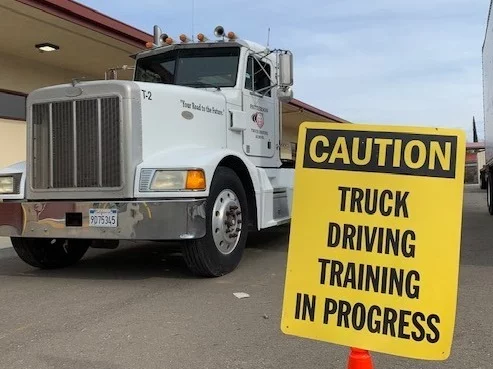Trucking Shortage: A Shortage We Can Solve or Have to Get Used to?

November 15, 2021
There’s a good chance Christmas shopping might look a little different this year. As you walk through shops and malls, you may see picked-over shelves with minimal items left to buy. Plenty of stores will be left empty due to a trucking shortage that has caused ruckus across the country. Goods aren’t getting where they should be on time or even at all. The American Trucking Association estimates that the industry has a shortage of eighty thousand workers, the highest their shortage rate has ever been. It is also estimated that at least one million truck drivers will need to be hired to meet the demands of what’s coming over the next decade. Eighty thousand workers is about four times the amount of people who live in Lockport or about 20 times the amount of students at our school. This significant loss of drivers has caused a change of pace in shipping times and has slowed a lot of businesses down.
Covid has been to blame for many problems in the past two years, but this might stem from a different issue. If you imagine a truck driver in your head, you probably see an older white male, which is an accurate depiction of what the group is made of. The industry is only made up of 6% females, the average age is 47, and the most common ethnicity is white. Many drivers are getting older and retiring, while new young people are not filling their spots. Finding people to take on the role of truck driving is difficult; not many people find it desirable, and the pay is relatively low. Some high schools and even a few community colleges are trying to entice more young people into the field by offering commercial drivers’ licence courses. Still, many get discouraged because of federal law preventing those under 21 from driving a commercial truck. Getting more women comfortable entering this predominantly male workforce can be another good way to get the industry back up and running. Trucking companies are trying to make this happen by recruiting more women and trying to even out the playing field. Immigrants and military vets are also encouraged because they can have the ability to work for themselves.
The trucking industry hauls about 72.5% of all freight transported in the country. Without any drivers, supplies aren’t being moved and stores and restaurants are left with no inventory. This is a problem I have experienced firsthand while working at Panera Bread, trucks are often delayed by several days or won’t show up so we are left with food ingredients that aren’t as fresh and supplies that are running low. As a result of this, we are forced to close early because we don’t have enough food left to sell, but closing early means we lose customers, so it becomes a difficult situation. Even Sysco, the largest food distributor in the world that has six-hundred thousand clients depending on them, has had delays and has cancelled some orders. People depend on these companies so they can have supplies for their businesses but with no one to transport them, people are out of luck.
Out of stock items are expected to rise 172% this holiday season, and shipping delays are almost guaranteed. People are encouraged to start their seasonal shopping now to beat the crazy delays and shortages. The fast pace we once knew might now be a thing of the past, as businesses are forced to adapt to the new challenges and come up with other solutions. The owners of a small catering company in Vermont, Mille and Amanda, say they now place several orders from a few different distributors expecting some to never arrive and some to be late. This may become the new normal as life after this shortage becomes regular. People might not be able to expect everything they need at the store to be there anymore, or to go to their favorite restaurants and be able to order what they want. Unless one million people wake up and decide they want to start truck driving tomorrow, this will be our new reality.




